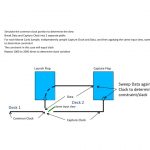At advanced nodes such as 7 and 5nm, timing closure and sign off are becoming much more difficult than before at 16nm. One area of chips that has increased in complexity dramatically and who’s correct operation is essential for silicon success is the clock tree. If the clock tree has excessive jitter, it will throw off every timing… Read More
Tag: path fx
Xilinx on ANSYS Elastic Compute for Timing and EM/IR
I’m a fan of getting customer reality checks on advanced design technologies. This is not so much because vendors put the best possible spin on their product capabilities; of course they do (within reason), as does every other company aiming to stay in business. But application by customers on real designs often shows lower performance,… Read More
Achieving a Predictable SignOff in 7nm
Designing with advanced-nodes FinFETs such as 7nm node involves a more complex process than prior nodes. As secondary physical effects are no longer negligible, the traditional margin-based approach applied at various design abstraction levels is considered ineffective. Coupled with the increase of device counts, failing… Read More
Path FX – the Production Proven Answer to Static Timing Analysis with Variation
I want to compliment ChipGuy on a very nice write-up of a complex topic – how to model process variation in static timing.
… Read More





